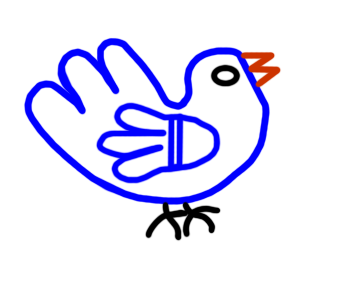

The Parkside Montessori School
53 Norwood Avenue
Upper Montclair, NJ 07043
973-509-7379
parksidemontessori@gmail.com


NEWS




OCTOBER - 2018
October is here, but we are not quite ready to put away our sea creatures. This year, perhaps more than in other years, these animals have held a great deal of fascination for the children. And so we are continuing to study the different kinds of whales and sharks and other sea creatures for a little while. In our work with the children we adhere to the basic Montessori tenet that the teacher be a keen observer of the child and be guided by the needs of each student. You as parents most likely realize that this age is a peak time for vocabulary development, and the children certainly seem capable of absorbing new names and terms, from the baleen whale to the hammerhead shark. However, it is October, and so we will now be talking apples, pumpkins, leaves, and all things fall. We are learning about the different kinds of apples as well as leaves and showing them on circle. Examples are the delicious, granny smith, cortland, rome, and macintosh apples. The leaves we focus on are maple, oak, gingko, sassafras, tulip, beech, and sweet gum. and there are moving games associated with these circle lessons.
Our daily schedule, even in our temporary space, remains the same each day. Consistency is important, especially during this time of transition. When we move back downstairs to our original space, the surroundings will be different again, but in order to make that next transition (one that we welcome) go smoothly, we will maintain the normal classroom schedule. This is as follows: After entry into the classroom and a short ease into our day period, we have snack. Then we proceed to circle time where we greet the children and do some singing and moving. We also use circle time to introduce, by demonstration, a new activity that will then be placed on the shelves. After circle, we have our “work time” where the children move into the different areas and choose what they would like to do. The teacher’s job is to gently guide them with their choices, always keeping in mind their individual learning styles and readiness levels. If a child chooses the same particular job every day, that is fine if they are enjoying the activity and benefitting from the experience. Again though, our aim is to make sure that they have the opportunity to explore all of the curriculum areas, and, because work time is the longest period of the day and our teacher/student ratio is very good, we are able to do that. Through this part of our session, we continually move around working with the kids in small groups or individually. After our work time, we get ready to go outdoors, and after outdoor (or indoor) play time, we end the session with some songs and a story.
Since this is the beginning of our school year, it also may be helpful, in addition to describing the daily schedule, to go over the set up of our Montessori classroom. There are four basic areas…Practical Life, Sensorial, Language and Math. As mentioned in last month’s newsletter, Practical Life includes washing and polishing exercises, pouring, spooning, grasping, tweezing, etc. Large and fine motor skills are honed in this area as well as a sense of order and process. The Sensorial area contains all kinds of building, sorting, arranging and comparing, size, shape, weight, and color. These activities enhance sensory development, and again, large and small motor development. In Sensorial we have many puzzles, both large and small. In the Language area there are many matching exercises, including object to object, picture to object, and picture to picture There are also concrete go-together and well as sequencing exercises, and writing and tracing letters and names. We also offer sand paper letters and the movable alphabet to foster letter identification Math features lots of small object counting, matching numbers to pictures, dot to dot work, number stamping, and concrete addition with objects.
Of course we have an art area which includes different art mediums and tools and both seasonal and skill-related activities. Art activities are available every day, and our easels will be set up once we move back downstairs. We are hoping that the move will be in November, and we can report that significant progress has been made over these last couple of weeks. We will keep you advised of the possible date for our relocation back down to our regular classrooms. We do continue to be amazed at and grateful for how well children, teachers, and you the parents have adapted positively to our temporary classrooms.
Every month new activities are brought into each classroom area that reflect our monthly themes. So, for example, in October in Practical Life there will be pumpkin scrubbing in addition to the sponging, pouring, spooning, fishing, and baby washing already on the shelves. In Sensorial, the broad stair will join the pink tower, red rods, and cylinder towers and blocks, and we will also bring in an apple tasting exercise. Language features apple and leaf identification and matching. In Math there will be lots of counting pumpkins, apples and leaves. At the art table we will have apple, leaf, and of course Halloween projects. We have a large repertoire of Halloween songs, and leaf and apple songs as well. A word about Halloween:
The children should not wear their costumes to school. It makes what is already a very exciting day a little too long for children so young. We will be celebrating with games, songs, and treats, but no costumes. If you would like to send in a treat, please let Annie know. We would need only one for each morning class and one for each afternoon class.
Also, towards the end of October, we will be planting bulbs outside with the children , a Parkside fall tradition. On circle we demonstrate how to prep the garden bed with a large shallow container of dirt, and we use the necessary tools for the prepping and the planting of crocus, daffodil, tulip and hyacinth bulbs into that box of dirt. Then, when we move outside, the children have a good idea of how to actually plant the bulbs into the ground surrounding our playground and entrances, and they each have the chance to do that. We explain that our bulbs will sleep deep down in their “cozy beds” all winter long and only emerge months from now in the spring. We talk a lot about seasonal changes at Parkside, despite the fact that summer is still hanging on, and there have not been too many beautiful crisp fall days. Our hope is that by the time we do our planting it will feel more like fall.
As the weather cools, we ask once again that you please label your child’s lunch boxes (on the top), water bottles, back packs, sweaters, hats, jackets, boots, etc. Preparation for outdoor play time and dismissal is FAR more organized and efficient. For those who have already done so, thank you so much.
“And so we discovered that education is not something whichthe teacher does,
but that it is a natural process which develops spontaneously in the human being (the child).
It is not acquired by listening to words, but by virtue of experiences in which
the child acts upon his or her environment.
The teacher’s task therefore is not to talk, but to prepare and arrange a series of motives
in a special environment made for the child.”
Maria Montessori, The Absorbent Mind